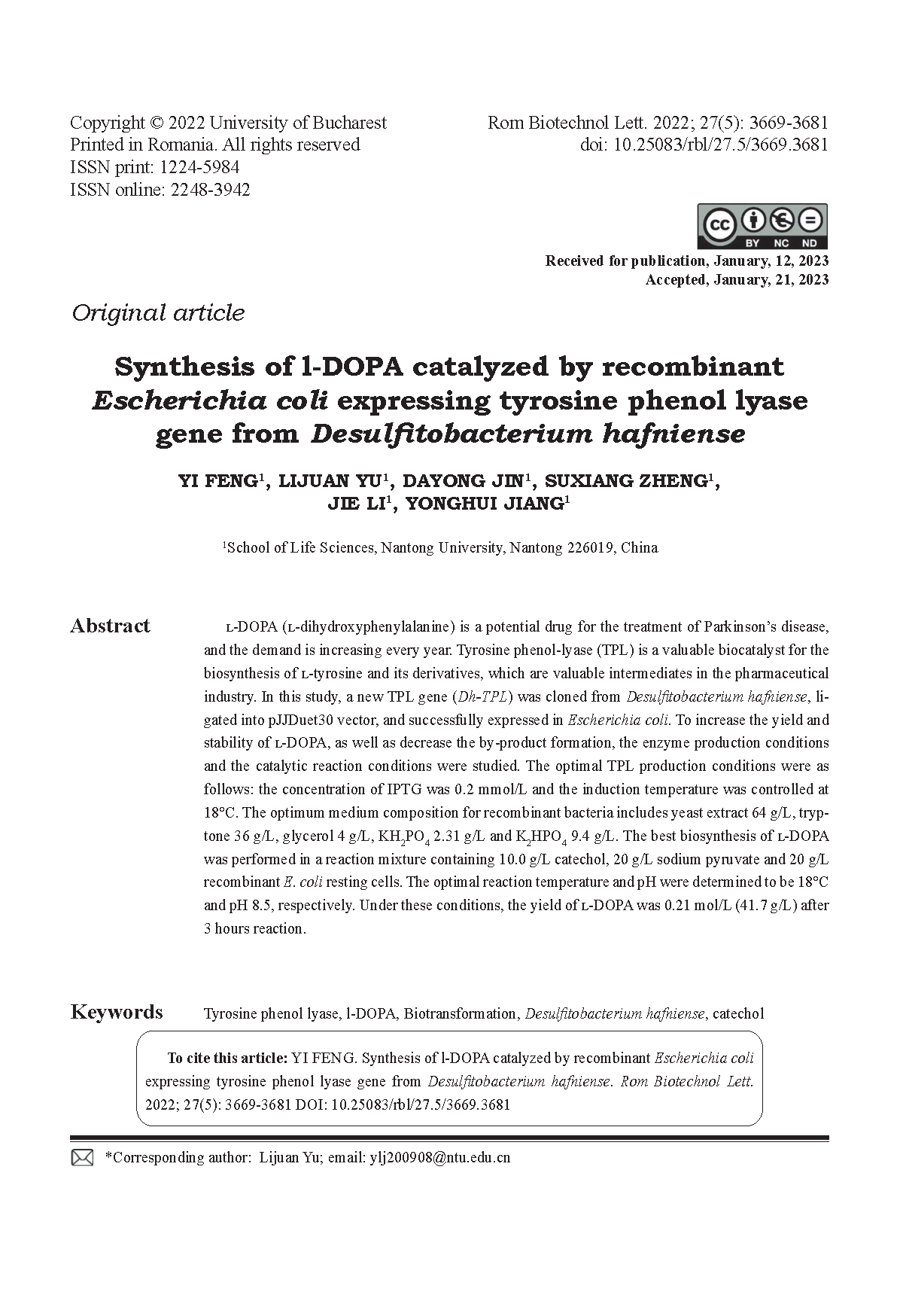Synthesis of l-DOPA catalyzed by recombinant Escherichia coli expressing tyrosine phenol lyase gene from Desulfitobacterium hafniense
DOI:
https://doi.org/10.25083/3669.3681Keywords:
Tyrosine phenol lyase, l-DOPA, Biotransformation, Desulfitobacterium hafniense, catecholAbstract
L-DOPA (L-dihydroxyphenylalanine) is a potential drug for the treatment of Parkinson’s disease, and the demand is increasing every year. Tyrosine phenol-lyase (TPL) is a valuable biocatalyst for the biosynthesis of L-tyrosine and its derivatives, which are valuable intermediates in the pharmaceutical industry. In this study, a new TPL gene (Dh-TPL) was cloned from Desulfitobacterium hafniense, ligated into pJJDuet30 vector, and successfully expressed in Escherichia coli. To increase the yield and stability of L-DOPA, as well as decrease the by-product formation, the enzyme production conditions and the catalytic reaction conditions were studied. The optimal TPL production conditions were as follows: the concentration of IPTG was 0.2 mmol/L and the induction temperature was controlled at 18°C. The optimum medium composition for recombinant bacteria includes yeast extract 64 g/L, tryptone 36 g/L, glycerol 4 g/L, KH2PO4 2.31 g/L and K2HPO4 9.4 g/L. The best biosynthesis of L-DOPA was performed in a reaction mixture containing 10.0 g/L catechol, 20 g/L sodium pyruvate and 20 g/L recombinant E. coli resting cells. The optimal reaction temperature and pH were determined to be 18°C and pH 8.5, respectively. Under these conditions, the yield of L-DOPA was 0.21 mol/L (41.7 g/L) after 3 hours reaction.




